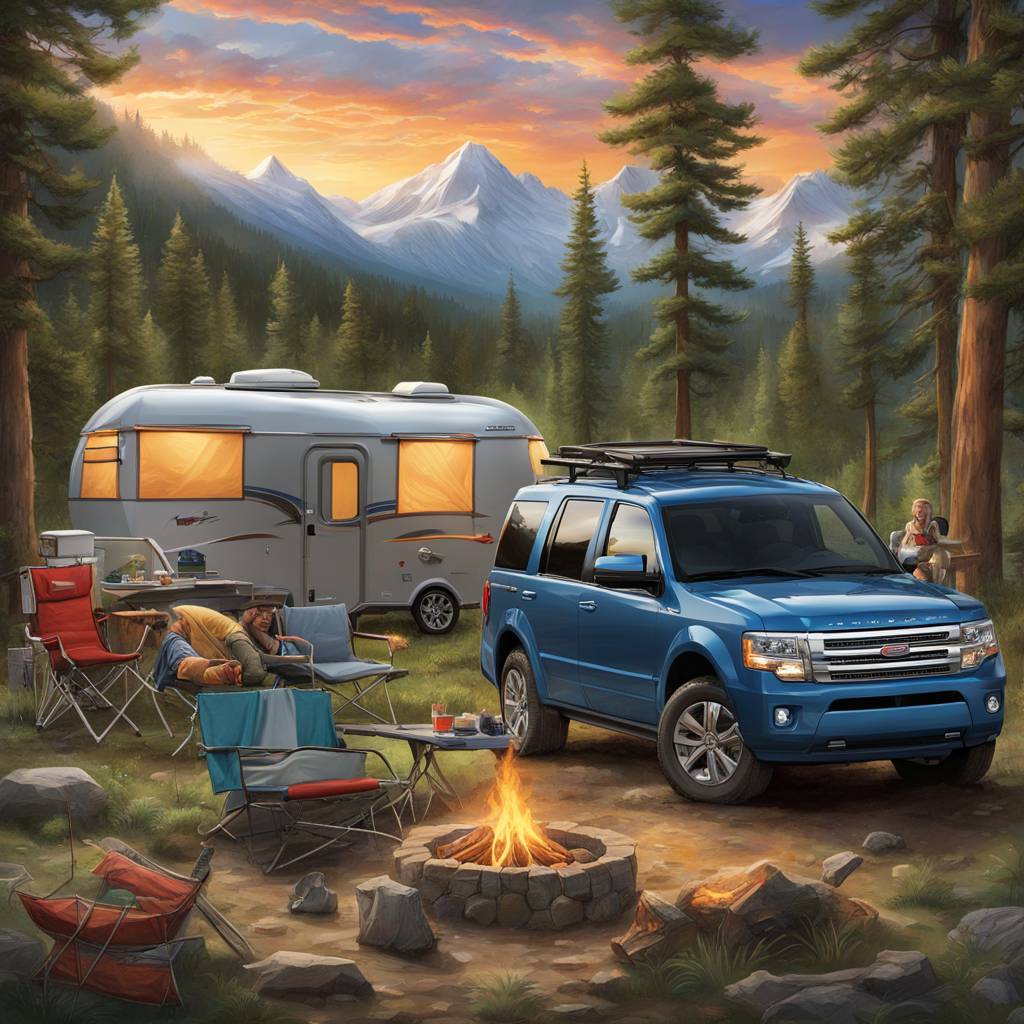More campers are starting to arrive at campsites with electric trucks and SUVs, representing about 4% of regular campers compared to the national average of 1% of Americans who own an electric vehicle. While still a minority, these campers are enjoying the benefits of electric vehicles while also highlighting the need for infrastructure improvements in remote camping areas. Trailer companies are also working to make their products easier to tow while EV makers are enhancing the overall camping and charging experience.
Electric motors have advantages when it comes to towing camper trailers, providing strong performance at both low and high speeds without straining or requiring gear shifts. However, one major concern for campers towing with EVs is range, as towing a trailer significantly reduces the driving range of any vehicle. Despite this challenge, campers like Matt Linn and Mike Kowal are finding ways to make it work. Linn’s Ford F-150 Lightning truck can still cover a range of more than 150 miles while towing his trailer, making it sufficient for his camping needs.
The issue of wind resistance, rather than weight, greatly affects a towing vehicle’s range, especially at highway speeds. Camper and RV manufacturer Thor Industries, which owns Airstream, is focusing on aerodynamics research to address this issue. Other companies like Bowlus are also emphasizing aerodynamics, with some models even equipped to charge an electric tow vehicle in emergencies or drive themselves for short distances using an electric motor. These advancements are crucial as more campers transition to electric vehicles for their camping trips.
Charging can be a challenge for electric vehicle campers, both at campsites and on the road. Campers like Linn have resorted to using household power outlets at campsites to charge their EVs, which can strain the campground’s capacity if multiple EVs are charging simultaneously. Kampgrounds of America (KOA) is working to install more EV chargers at campsites to accommodate the growing number of electric vehicle campers. Similarly, companies like Rivian are building out their own network of chargers to support owners who may venture off-road or to remote camping locations.
The physical layout of most EV chargers can be challenging for campers towing a trailer, as chargers are typically located at the end of parking spaces, making it difficult to charge with a trailer attached. Companies like Rivian are working on designing trailer-friendly chargers that do not require owners to unhitch their vehicles. Additionally, EVs come equipped with multiple power outlets, allowing campers to power appliances like coffee makers and ice makers without the need for a gas-powered generator. This helps reduce noise pollution at campsites and provides a quieter camping experience for all.
Overall, as more campers switch to electric vehicles for their camping trips, the need for improved infrastructure and charging options becomes increasingly important. Companies and campground operators are recognizing this shift and working to accommodate the growing number of electric vehicle campers. Advancements in aerodynamics and charging technology are making it easier for campers to enjoy the benefits of electric vehicles while exploring remote camping locations. As the industry continues to evolve, electric vehicles are likely to become more common sights at campsites, offering a greener and quieter camping experience for all.


